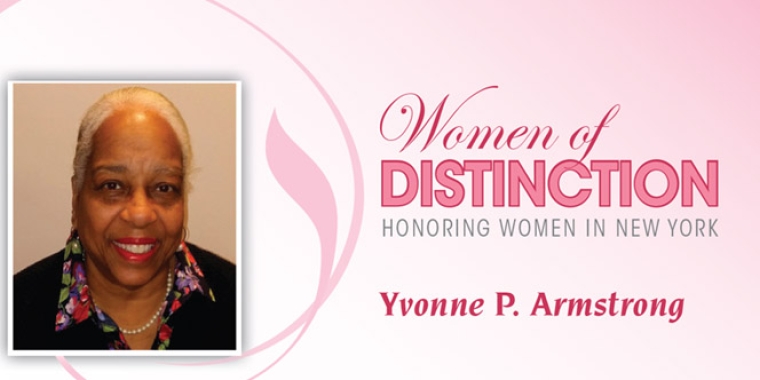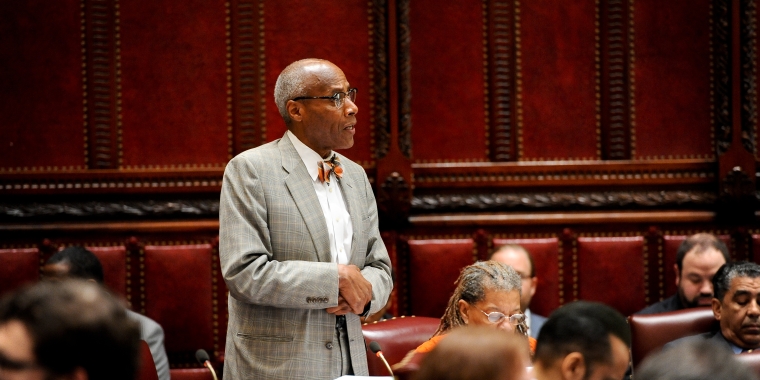
Senator Perkins’ Measure Would Protect Children From Lead Poisoning

Each year, more than 10,000 children in New York are diagnosed with elevated blood-lead levels, possibly causing irreparable damage.
State Senator Bill Perkins (D-Harlem) said part of the problem is State laws that focus on secondary prevention. “Once the damage is done, it cannot be undone. Our focus should be on preventing lead poisoning before it occurs, not on detecting it afterwards.”
Perkins, author of the “Childhood Lead Poisoning Prevention and Safe Housing Act of 2007” (S.4121), said “Lead poisoning has a devastating effect on a child’s ability to think, concentrate and learn. It is overwhelming to the families it strikes and carries a huge societal cost, both financially and in terms of lost human potential.”
Wilma White, a mother whose two children were treated for lead poisoning, said: “Like many parents of children found to have high levels of lead, I was shocked to learn about my son’s diagnosis. With this legislation, we can prevent families from having to endure the pain of finding out that their home is not the safe haven for their children that they had always trusted it was.”
“We shouldn’t be finding out about the presence of lead through a child’s medical diagnosis,” she added. “We must be proactive.”
Perkins sponsored similar legislation in the New York City Council which has helped to reduce lead poisoning cases in the five boroughs.
Senate Democratic Leader Malcolm A. Smith said Perkins’ legislation “will protect our most valuable and vulnerable resource from the heartbreaking effects of lead poisoning. We must not turn our backs on the thousands of children who are poisoned by lead every year.”
Governor Eliot Spitzer praised Perkins, saying “Lead is a potent toxin that especially affects children's ability to learn. It is imperative that we work together to reduce exposure to lead and this bill goes a long way in accomplishing just that. I applaud Senator Perkins for his leadership on this critical environmental health issue.”
Lt. Governor David A. Paterson said, “This legislation addresses the toxic effects of lead on our children when it matters most: before they happen. When we forget the most vulnerable in our society, we’re forgetting our future. Senator Perkins is to be commended for his efforts in bringing environmental health justice for our families.”
Senator Neil Breslin (D-Delmar) said, “The initial Lead Poisoning Prevention Program, although a step in the right direction, was enacted nearly 15 years ago. Senator Perkins' initiative is more detailed and concentrates on preventing lead poisoning before it happens. This comprehensive measure will go a long way to reduce and hopefully one day eliminate lead poisoning in our state's most prized possession – our children.”
Perkins said his legislation would substantially reduce, and eventually eliminate, the incidence of childhood lead poisoning in New York State. It would require the Department of Health (DOH) to implement and oversee intensive primary prevention plans in communities with the greatest number of lead poisoning cases in the previous year.
All rental properties built before 1970 (when lead paint was banned in New York) would have to be certified as “lead free,” “lead contained” or “lead stabilized,” and periodically recertified to ensure they do not present a danger to young children or expectant mothers who reside there.
In order to help landlords meet their obligations under the law, Perkins’ measure calls for new tax credits and a revolving loan fund to provide incentives and resources for property owners. “We don’t want to hurt landlords and property owners,” Perkins said. “We are going to help them to do the right thing.”
Senator Liz Krueger (D-Manhattan) said, “In introducing this bill, Senator Bill Perkins has continued his successful advocacy on behalf of all children in New York State who should never be placed at risk from lead poisoning.”
Ralph Spezio, the recently retired elementary school principal of Enrico Fermi School No.17 in the Rochester City School District, said 41 percent of his 3, 4, and 5 year old students had blood lead levels higher than 10 mg/dl, which according to the Center for Disease Control can cause permanent brain damage.
Mr. Spezio said childhood lead poisoning “is the invisible and silent monster that is devouring our children right before our very eyes, lowering their IQs and stealing their futures.”
Lead poisoning is especially significant in New York because of the age of our housing stock, Perkins said. The State has the most pre-1950 housing units in the country, with more than one million more than the next highest state, Pennsylvania.
More than 3.3 million homes in New York were built before 1950, and although the State banned the use of lead paint in 1970, more than 70 percent of the State’s housing stock was built prior to 1970 and is potentially contaminated.
The State currently requires inspection for lead hazards only after a child is diagnosed with an elevated blood level of 20 mcg/dL (20 micrograms of lead per deciliter of blood) or higher. However, that is twice the “level of concern” of 10 mcg/dL set by the Center for Disease Control.
“The current standards are simply not sufficient,” Perkins said. “In fact, when it comes to protecting children, there is no safe level of lead exposure. Even small amounts of lead are toxic and damaging, and can cause irreparable damage.”



